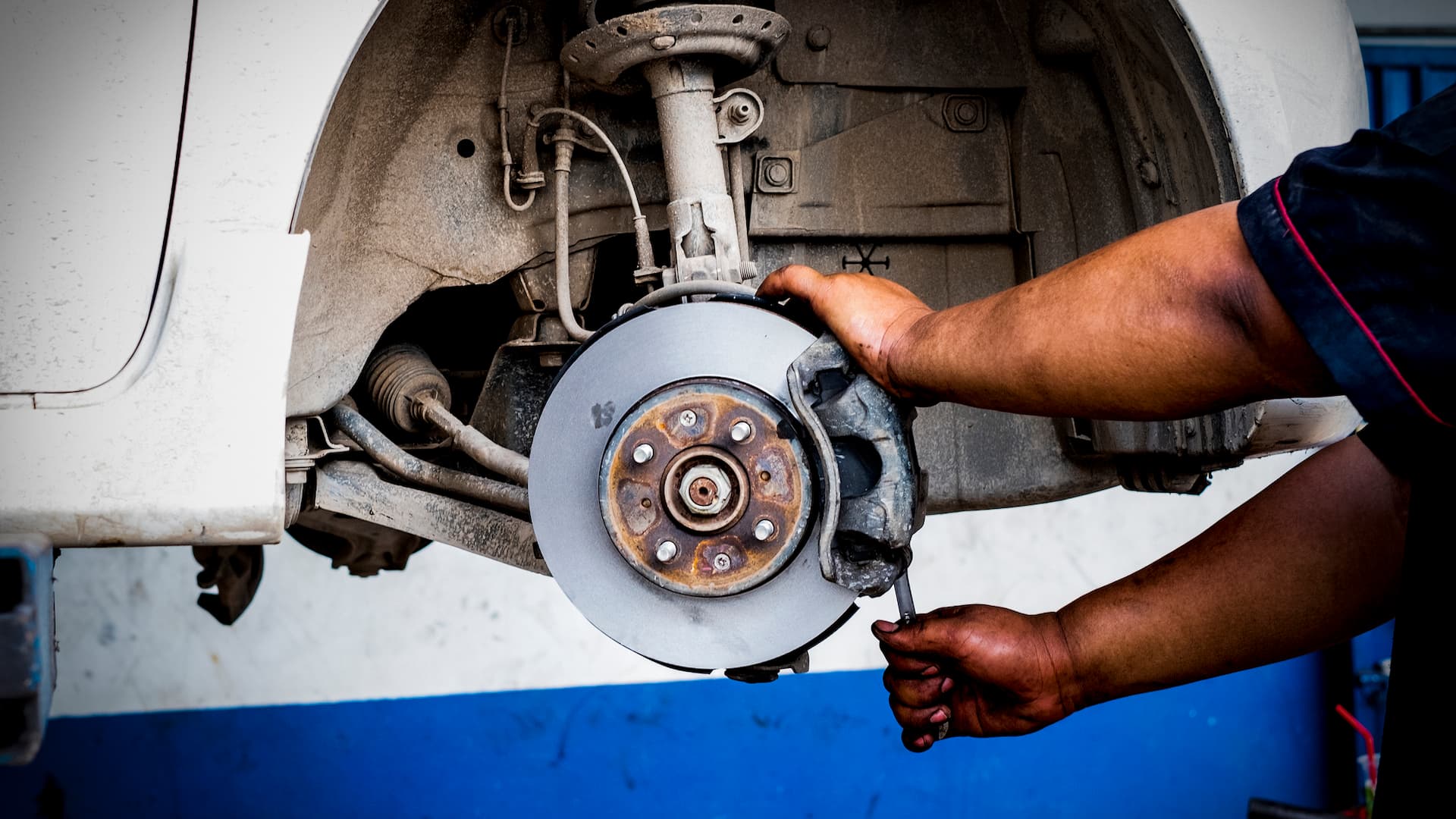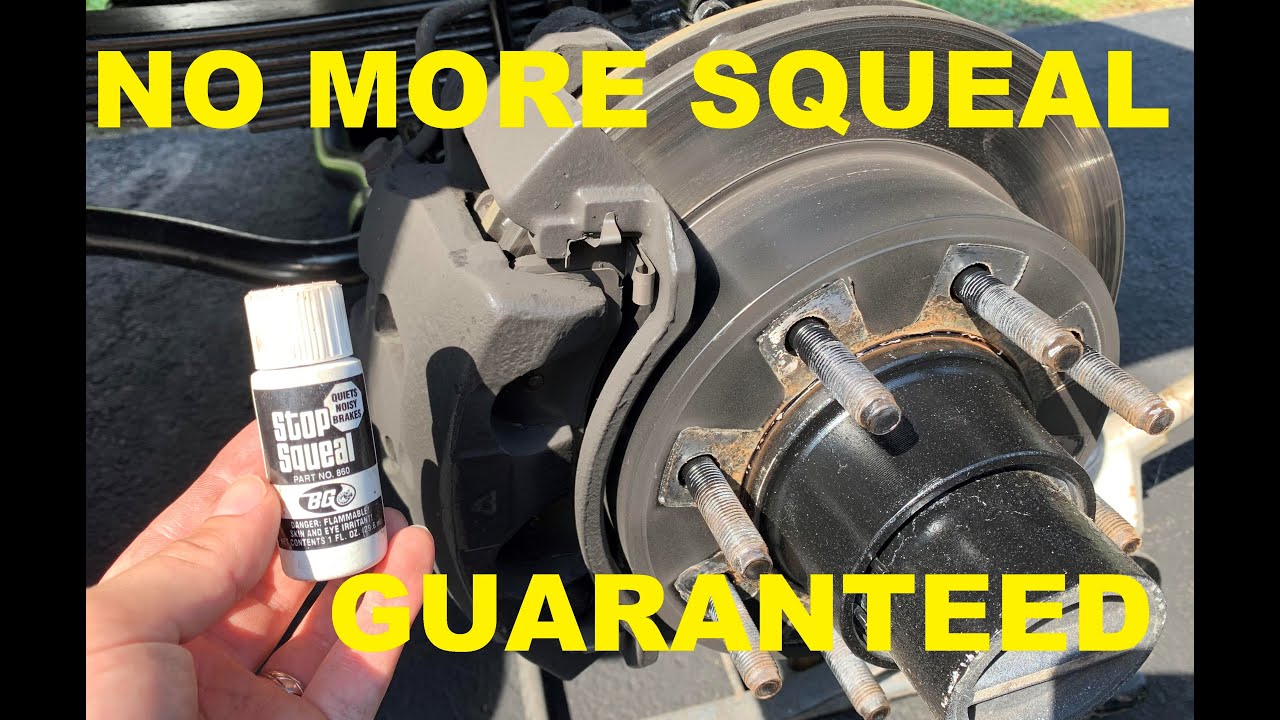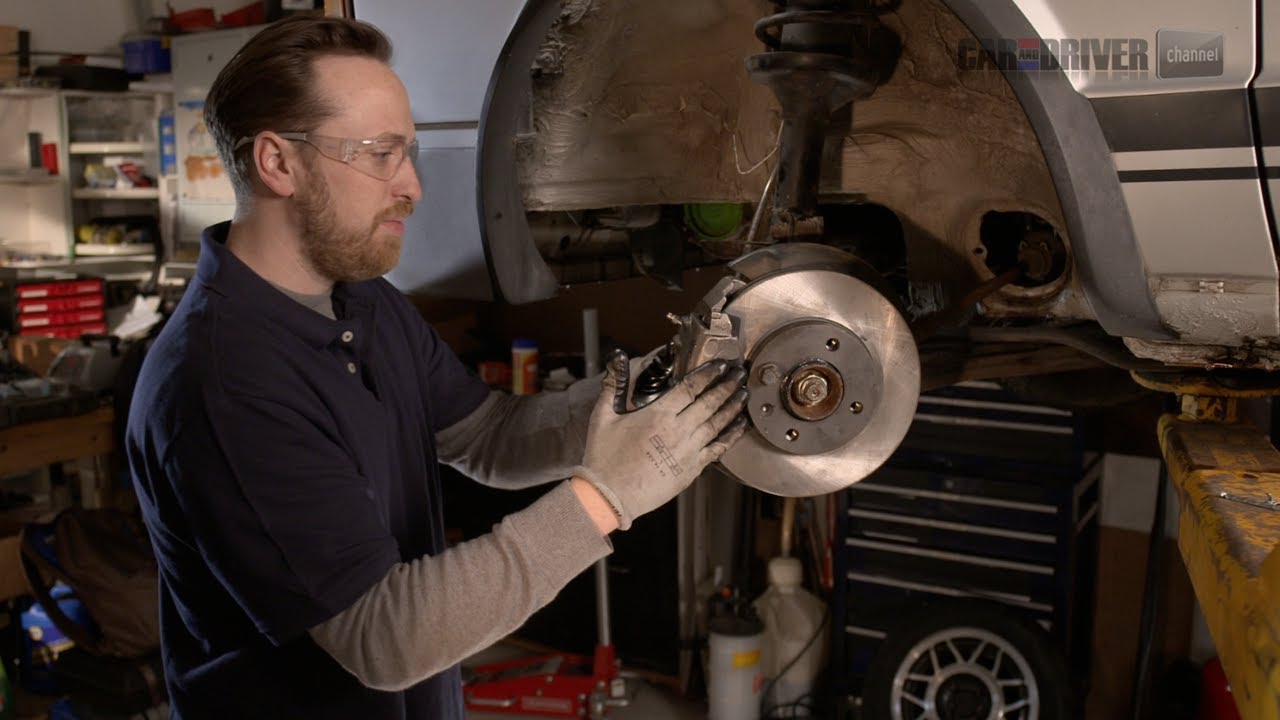Table of Contents
1. Why Brake Noises Demand Action ⚠️
Ignoring brake noises is like ignoring a smoke alarm—your safety is at risk. Here’s why:
- Grinding = Metal-on-metal contact, destroying rotors (200–200–600 repair).
- Rattling = Loose components risking brake failure.
- Squeaking = Early warning of worn pads or contamination.
Key Stat: 25% of car accidents involve brake system failures.
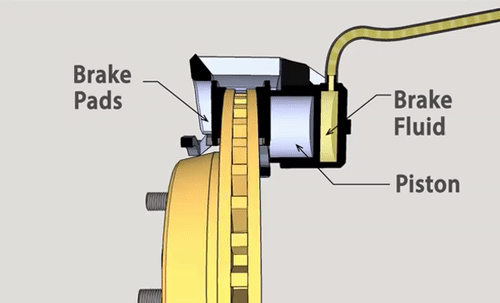
2. Types of Brake Noises & Their Causes 🔊
| Noise | Sound | Common Causes |
|---|---|---|
| Squeak | High-pitched chirp/squeal | Worn pads, glazed rotors, missing shims. |
| Grind | Metal scraping/growling | Pads worn to metal, cracked rotors. |
| Rattle | Loose knocking/clunking | Loose caliper bolts, broken anti-rattle clips. |
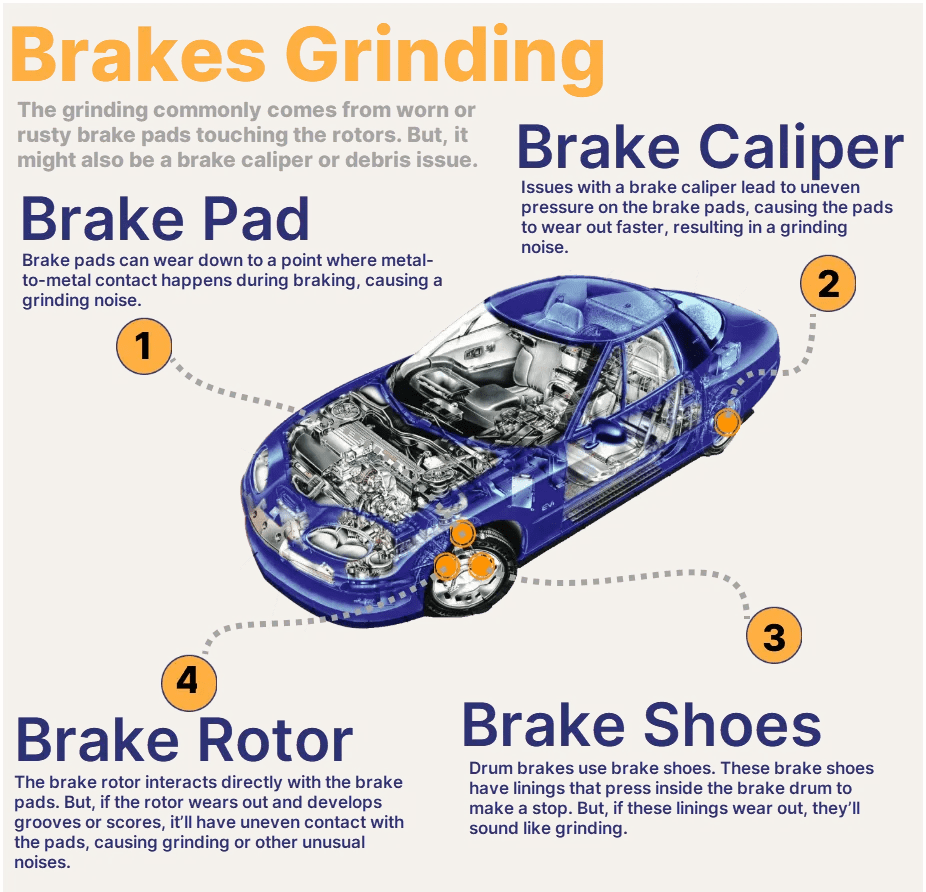
3. Diagnosing Squeaky Brakes 🚗
Step 1: Check Pad Thickness
- Healthy pads: >3mm thick.
- Worn pads: Replace immediately.
Graphic 3: Photo guide: Measuring pad thickness with a caliper.
Step 2: Inspect Rotors
- Look for glazing (shiny surface) or grooves. Clean with sandpaper or replace.
Step 3: Lubricate Contact Points
- Apply brake grease to pad shims, caliper pins, and back of pads.
4. Fixing Grinding Sounds ⚙️
Urgent Action Needed!
- Stop Driving: Metal-on-metal grinding ruins rotors.
- Replace Pads & Rotors:
- Use semi-metallic or ceramic pads (e.g., Bosch QuietCast).
- Resurface or replace scored rotors.

5. Solving Rattles & Clunks 🔧
Checklist for Rattles:
- Tighten Caliper Bolts: Torque to specs (e.g., 25–35 ft-lbs).
- Replace Anti-Rattle Clips: Bent clips cause pad movement.
- Inspect Brake Hardware: Springs, pins, and shims must be secure.
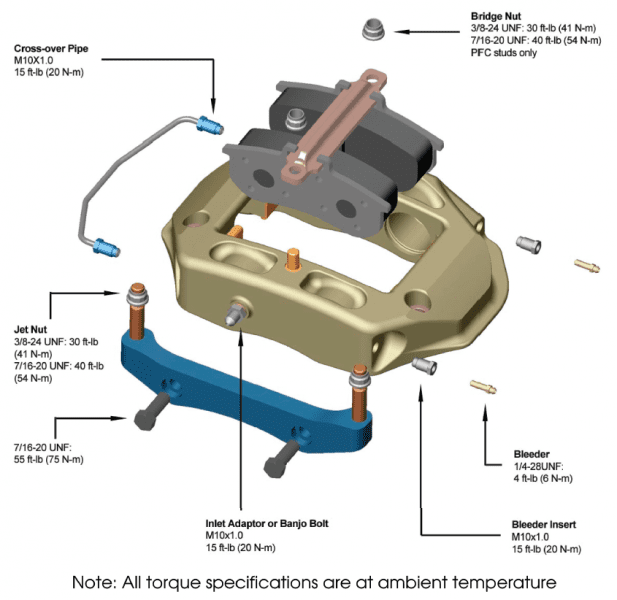
6. Essential Tools for DIY Repairs 🧰
| Tool | Purpose | Price |
|---|---|---|
| C-Clamp | Compress caliper pistons | 10–10–20 |
| Torque Wrench | Proper bolt tightening | 50–50–150 |
| Brake Grease | Lubricate pins/shims | 8–8–15 |
7. Step-by-Step Brake Service Guide 📋
Replacing Brake Pads:
- Lift car, remove wheel.
- Remove caliper bolts and old pads.
- Compress caliper piston with a C-clamp.
- Install new pads, grease contact points.
- Reassemble and torque bolts.
8. Preventing Future Noise Issues 🛡️
- Wash Wheels Regularly: Remove brake dust and road salt.
- Use Quality Parts: Avoid cheap pads—opt for Akebono or Brembo.
- Break-In New Pads: 5–10 gentle stops to bed pads properly.
Here’s the brake maintenance schedule presented in a table format:
| Maintenance Task | Frequency | Details |
|---|---|---|
| Visual Inspection | Every 3,000 to 5,000 miles | Check for wear on brake pads and rotors. |
| Brake Fluid Level | Every 3,000 to 5,000 miles | Ensure fluid is at the recommended level. |
| Listen for Noises | Every 3,000 to 5,000 miles | Listen for squeaking or grinding sounds. |
| Brake Pad Inspection | Every 10,000 miles | Check thickness; replace if < 3mm. |
| Brake Rotor Condition | Every 10,000 miles | Inspect for warping or scoring. |
| Brake Fluid Change | Every 20,000 to 25,000 miles | Replace fluid (typically every 2 years). |
| Brake Line Inspection | Every 20,000 to 25,000 miles | Check for cracks, leaks, or corrosion. |
| Full Brake System Inspection | Every 30,000 to 50,000 miles | Professional inspection of all components. |
| Replace Brake Pads | Every 30,000 to 50,000 miles | Replace if worn or performance decreases. |
| Replace Brake Rotors | Every 70,000 to 100,000 miles | Consider replacing if pads have been changed multiple times. |
| Check Brake Calipers | Every 70,000 to 100,000 miles | Ensure calipers function properly. |
9. Top 5 Brake Maintenance Mistakes ❌
| Mistake | Risk | Fix |
|---|---|---|
| Reusing Shims | Increased noise/vibration | Always install new shims. |
| Skipping Rotor Resurfacing | Uneven pad wear | Resurface or replace rotors. |
| Over-tightening Bolts | Stripped threads | Use a torque wrench. |
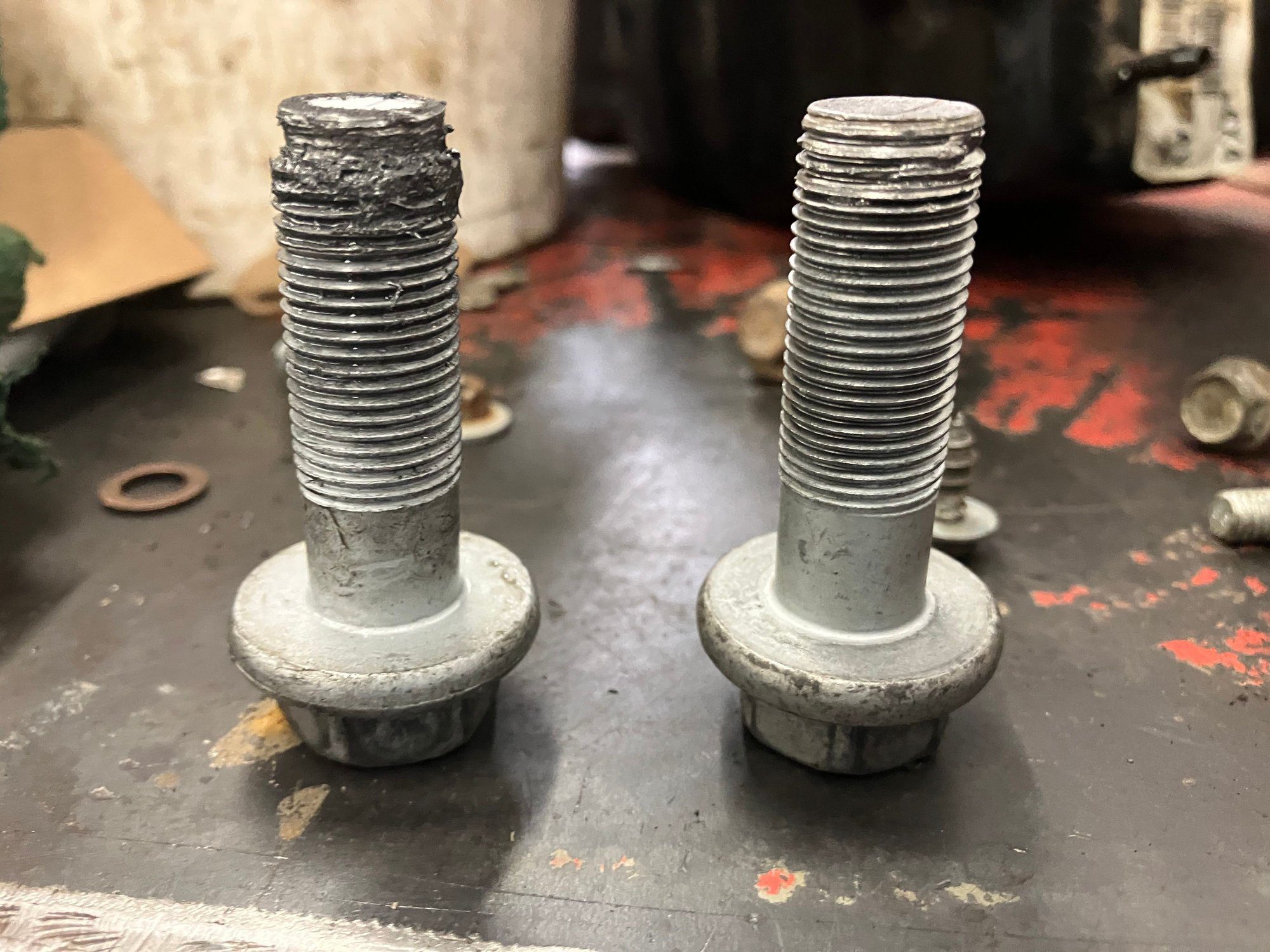
10. When to Call a Mechanic 👨🔧
Seek Help If You Notice:
- Soft brake pedal (air in lines or fluid leak).
- Pulling to one side (stuck caliper or uneven pads).
- ABS warning light (sensor or hydraulic issue).

11. FAQs ❓
Q: Why do my brakes squeak after new pads?
A: They need bedding-in (100–200 miles of gentle stops).
Q: Can I drive with grinding brakes?
A: No! Immediate repair prevents rotor/caliper damage.
Q: How much does a brake job cost?
A: DIY: 100–100–300 (pads/rotors). Mechanic: 300–300–800.
12. Free Brake Noise Checklist 📝
Download Your Free Checklist [🔗 Link]
Includes:
- Step-by-step noise diagnosis.
- Brake part replacement guide.
- Emergency contacts for repairs.
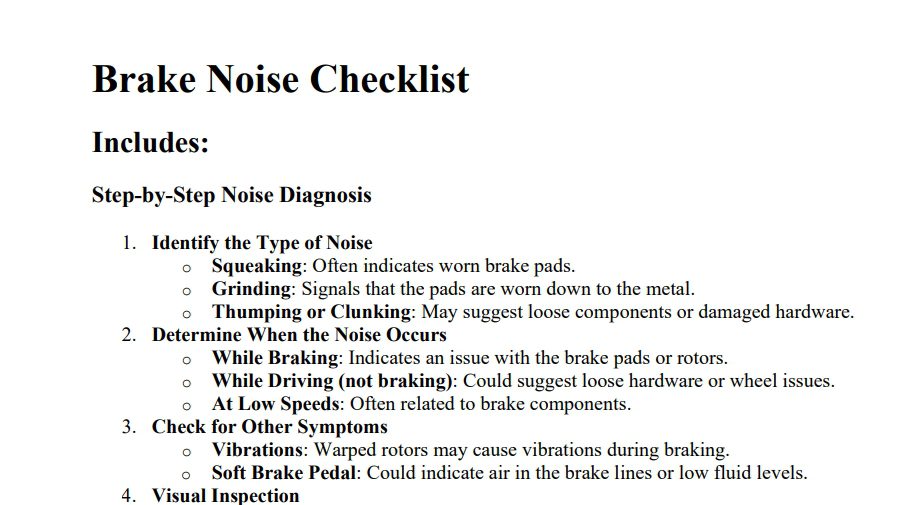
Final Pro Tips 🌟
- Listen Closely: Identify noise location (front/rear, driver/passenger side).
- Invest in Tools: A $50 torque wrench saves $500 in repairs.
- Stay Calm: Most brake fixes are DIY-friendly with patience!
🌟 Share this guide to help others silence their brakes! 🌟
Expand Your Automotive Knowledge 📝
Explore 500+ Free Expert-Curated Guides
🚗 Learn New Skills
From basic maintenance to advanced repairs — clear, actionable tutorials for every skill level.
🌍 Access Anywhere
Mobile-friendly guides with HD visuals. No downloads required.
- Guides & Tutorials
- Car Maintenance 101
- Diagnostics & Troubleshooting
- Seasonal Maintenance
- Budget-Friendly Repairs
- Electrical Systems Guide
- Car Safety & Reliability
- Tools & Product Reviews
- Routine Maintenance
- Car Modifications & Upgrades
- Buying/Selling Guides
- Eco-Friendly Car Care
- Advanced Repairs
- Car Laws & Compliance
- Emergency Repairs
- Future Car Tech

